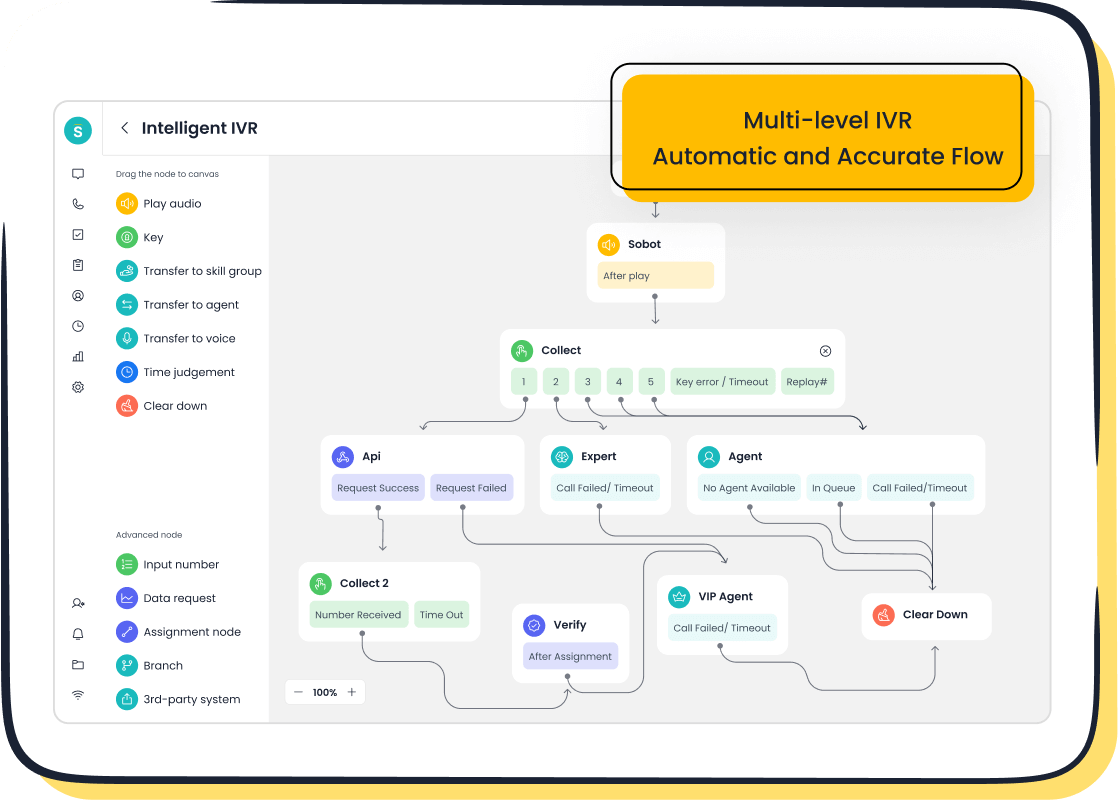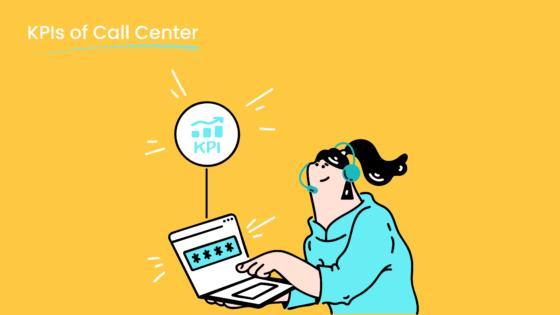Contact Center Software Explained for Beginners

Imagine a tool that centralizes customer interactions across phone, email, chat, and social media—all in one unified platform. That’s exactly what contact center software is designed to do. But what is contact center software? It’s a solution that empowers businesses to manage customer communications seamlessly, ensuring every inquiry receives the attention it deserves.
Why does this matter? In today’s competitive landscape, 80% of organizations strive to differentiate themselves by delivering exceptional customer experiences. With features like real-time analytics and AI-driven insights, contact center software enhances response times and personalizes interactions. This not only elevates customer satisfaction but also optimizes operations, enabling companies like Sobot to provide efficient, scalable, and reliable solutions to their clients.
What Is Contact Center Software?

Definition and Overview
Contact center software is a tool that helps businesses manage customer interactions across multiple communication channels, such as phone calls, emails, live chat, and social media. It acts as a centralized hub, ensuring that every customer inquiry is handled efficiently and consistently. Unlike traditional call center software, which focuses primarily on voice calls, contact center software integrates various channels into one unified platform. This makes it easier for you to deliver seamless customer experiences.
For example, imagine a customer reaching out via email and later following up through live chat. Contact center software ensures that all previous interactions are visible to the agent, allowing them to provide personalized and informed responses. This integration is vital in today’s fast-paced world, where customers expect quick and accurate resolutions.
Key Functions and Purpose
Contact center software serves several critical functions that enhance both customer satisfaction and operational efficiency:
- Omnichannel Routing: It directs customer inquiries to the right agent or department, regardless of the communication channel.
- Workforce Engagement Management: Advanced scheduling tools optimize agent productivity by matching forecasted call volumes with agent skill sets.
- Reporting and Analytics: Real-time data insights help you monitor performance metrics like average handle time (AHT) and first call resolution (FCR).
These features make contact center software indispensable for businesses aiming to streamline operations. For instance, AI-powered chatbots can handle routine inquiries, freeing up agents to focus on complex issues. This not only improves efficiency but also enhances customer satisfaction.
The market for contact center software reflects its growing importance. In 2023, it was valued at $36.27 billion, with projections to reach $137.75 billion by 2030, growing at a compound annual growth rate (CAGR) of 21%. This growth highlights the increasing demand for tools that integrate AI and predictive analytics to optimize operations.
Why It’s Essential for Modern Businesses
Modern businesses face the challenge of meeting high customer expectations while maintaining operational efficiency. Contact center software addresses this by enabling effective communication across multiple channels. It strengthens customer relationships and streamlines operations, making it a cornerstone of successful business strategies.
Metrics like first call resolution (FCR) and average handle time (AHT) demonstrate the software’s impact. FCR measures the percentage of issues resolved in a single interaction, while AHT tracks the time taken to complete customer interactions. Both metrics reflect the efficiency and quality of your customer service.
| Metric | Description |
|---|---|
| First Call Resolution (FCR) | Measures the percentage of customer service issues resolved in a single interaction. |
| Average Handle Time (AHT) | Time taken to complete a customer interaction, reflecting operational efficiency. |
| Customer Satisfaction (CSAT) | Scores that quantify customer satisfaction, essential for evaluating service quality. |
Sobot’s contact center solutions exemplify these benefits. With features like intelligent IVR, AI-powered voicebots, and omnichannel capabilities, Sobot helps businesses improve customer satisfaction and reduce costs. For example, Opay, a financial service platform, achieved a 90% customer satisfaction rate and reduced operational costs by 20% after implementing Sobot’s omnichannel solution.
By adopting contact center software, you can enhance customer experiences, boost productivity, and stay ahead in a competitive market.
How Does Contact Center Software Work?
Overview of the Technology Behind It
Contact center software relies on advanced technology to streamline customer interactions and improve operational efficiency. Modern solutions often use a cloud-based architecture, known as Contact Center as a Service (CCaaS). This approach eliminates the need for complex on-premises installations and allows agents to work remotely. It also provides scalability, enabling businesses to adapt quickly to changing demands.
| Feature | Cloud Contact Center | On-Premises Contact Center |
|---|---|---|
| Setup | Quick and cost-effective | Lengthy installation process |
| Scalability | Highly scalable | Limited scalability |
| Reliability | High reliability with upgrades | Dependent on hardware |
| Improvements | Continuous feature enhancements | Limited capabilities |
| Integrations | Extensive integrations available | Difficult setup |
| Cost | Lower upfront and ongoing costs | High initial and maintenance costs |
| Remote Work Flexibility | Agents can work from anywhere | Restricted to physical location |
| Customer Engagement | Seamless across multiple channels | Separate handling of each channel |
Cloud infrastructure plays a key role in CCaaS solutions. It reduces your IT burden by shifting management responsibilities to the provider. Features like omnichannel routing ensure inquiries reach the right agent, while interactive voice response (IVR) automates caller interactions. Real-time analytics offer insights into performance and customer sentiment, helping you make data-driven decisions.
With cloud-based contact center software, you gain flexibility, scalability, and reliability that align with modern business needs.
Integration with Communication Channels
Contact center software excels at integrating multiple communication channels into one unified platform. This capability allows you to manage customer inquiries from phone calls, emails, live chat, and social media—all through a single dashboard.
- Omnichannel support ensures seamless communication across platforms, making interactions cohesive and contextually aware.
- Unified customer profiles consolidate data from different channels, giving agents a complete view of customer history and preferences.
- Integration with business systems like CRM tools enables personalized service and efficient workflow management.
Imagine a customer reaching out via social media and later following up through email. With omnichannel integration, you can access all previous interactions in one place. This ensures consistent and informed responses, enhancing the overall customer experience.
Examples of Common Use Cases
Contact center software is used across industries to solve real-world challenges and improve customer service. Here are some examples:
- Accent translation technology: Sanas implemented this feature in customer service, reducing agent attrition by up to 50%.
- AI-driven call tracking: MoneySolver doubled its close rate and increased return on ad spend (ROAS) by 30% using Invoca’s platform.
- Self-service channels: These achieved a first contact resolution (FCR) rate of 62%, outperforming agent-assisted methods at 55%.
Additionally, nearly 25% of contact centers plan to invest in self-service capabilities. This trend highlights the growing importance of AI-driven solutions in enhancing customer experience.
Whether it’s automating routine tasks or improving call tracking, contact center software empowers you to deliver better service and achieve measurable results.
Types of Contact Center Software
Inbound vs. Outbound Contact Centers
Contact centers can be categorized based on how they handle customer interactions: inbound or outbound. Inbound call centers focus on responding to incoming inquiries, such as customer support calls or service requests. Outbound call centers, on the other hand, proactively reach out to customers for purposes like sales, surveys, or follow-ups.
| Metric | Inbound Call Centers | Outbound Call Centers |
|---|---|---|
| Interaction Style | Reactive (responding to incoming calls) | Proactive (initiating calls to potential customers) |
| Script Usage | Flexible, based on customer needs | Predetermined, focused on sales or data collection |
| Customer Engagement | Customer-initiated, indicating interest | Unsolicited, requiring strategic engagement |
| Goal Orientation | Customer satisfaction and problem resolution | Aggressive sales-driven objectives |
Inbound centers prioritize customer satisfaction and problem-solving, while outbound centers aim to drive sales or collect data. For example, a retail business might use inbound call center software to assist customers with product inquiries, while an outbound solution could help schedule promotional calls.
Omnichannel Contact Centers (Sobot Omnichannel Solution)
Omnichannel contact centers unify communication channels like voice, email, chat, and social media into one platform. This integration ensures seamless customer experiences, regardless of how they choose to interact. Sobot’s Omnichannel Solution exemplifies this approach, offering advanced features like AI-driven chatbots, unified customer profiles, and real-time analytics.
| Metric | Result |
|---|---|
| Reduction in inbound discussion volume | 20% |
| Positive feedback rate | 96% + |
| Customer satisfaction rate | Over 95% |
| Self-service question resolution | 22.2% |
| Brands served | More than 10,000 |
With Sobot’s solution, you can reduce inbound discussion volume by 20% and achieve a customer satisfaction rate of over 95%. For example, Opay, a financial service platform, used Sobot’s omnichannel contact center solution to streamline customer interactions across social media, email, and voice channels. This resulted in a 90% satisfaction rate and a 20% cost reduction.
Omnichannel contact centers simplify operations and improve customer satisfaction by consolidating communication channels into one efficient system.
Cloud-Based vs. On-Premises Solutions
Choosing between cloud-based and on-premises contact center software depends on your business needs. Cloud-based solutions, like Sobot’s Voice Call Center, offer scalability, affordability, and flexibility. On-premises solutions require significant upfront investment and are limited in scalability.
| Function | Cloud Contact Center | On-Premises Contact Center |
|---|---|---|
| Setup | Affordable, out-of-the-box installation that can work with existing devices | Months-long process that requires hardwiring each device to a central system |
| Scalability | Near-infinite scalability; can add new lines in a few clicks | Additional on-premise setup required for each new line |
| Reliability | Enterprise-level reliability with excellent uptime and speed improvements through software upgrades | Reliability dependent on existing hardware, which will deteriorate over time |
| Cost | Minimal upfront cost and lower monthly cost per user | High up-front costs and additional ongoing costs for system maintenance |
| Remote work flexibility | Agents that work from anywhere in the world | Agents restricted to the system’s physical location |

Cloud-based contact center solutions are ideal for businesses seeking flexibility and cost savings. They allow agents to work remotely and integrate seamlessly with tools like CRM systems. For example, Sobot’s Voice Call Center provides global telephony support, intelligent IVR, and AI-powered voicebots, ensuring reliable and scalable operations.
Cloud-based solutions empower you to adapt quickly to changing demands, making them a preferred choice for modern businesses.
Key Features and Benefits of Contact Center Software

Core Features (e.g., IVR, CRM Integration, Analytics)
Contact center software offers powerful features that simplify customer interactions and improve service quality. Interactive Voice Response (IVR) systems guide callers through automated menus, helping them resolve issues or reach the right agent quickly. CRM integration provides agents with real-time access to customer data, enabling personalized service. Analytics tools track key metrics like call containment rate and customer satisfaction, offering insights to refine operations.
| Metric | Description |
|---|---|
| Call Containment Rate | Measures the percentage of callers who resolve their issues without needing help from a live agent. |
| Average Handling Time (AHT) | Indicates ease of navigation and overall customer experience within the IVR system. |
| Customer Satisfaction (CSAT) | Reflects how satisfied callers are with their IVR interactions. |
| First Call Resolution (FCR) | Tracks the percentage of queries resolved during the first call. |
| Call Abandonment Rate | Identifies gaps in the call flow by measuring callers who hang up before resolution. |
Sobot’s Voice Call Center excels in these areas. Its intelligent IVR system reduces call abandonment rates and improves FCR by providing clear prompts and efficient routing. With AI-powered analytics, you can monitor customer sentiment and agent performance, ensuring continuous improvement.
Benefits for Customer Experience
Contact center software transforms customer experience by making interactions faster, easier, and more personalized. Features like omnichannel support unify communication channels, allowing customers to switch between email, chat, and voice without losing context. CRM integration ensures agents have a complete view of customer history, enabling tailored responses.
| Metric | Description |
|---|---|
| Customer Satisfaction Score (CSAT) | Measures customer satisfaction using a Likert scale. |
| Net Promoter Score (NPS) | Gauges customer loyalty on a 0-10 scale. |
| Customer Effort Score (CES) | Assesses the ease of customer interactions, often using a 5-point or 7-point scale. |
Sobot’s Omnichannel Solution enhances customer satisfaction by integrating AI-driven chatbots and unified customer profiles. For example, Opay achieved a 90% satisfaction rate after implementing Sobot’s solution, demonstrating the impact of seamless communication and personalized service.
Operational Efficiency and Cost Savings
Contact center software boosts efficiency by automating routine tasks and optimizing workflows. Automation reduces costs related to manual processes by up to 30%, saving businesses thousands annually. Features like natural language processing improve call outcomes, reducing costs per call.
Sobot’s AI-powered tools monitor calls for quality and identify coaching opportunities in real-time. Self-service options, such as chatbots, allow customers to resolve issues independently, lowering the need for direct agent involvement. These capabilities not only enhance productivity but also reduce operating costs significantly.
For example, a 10% improvement in First Call Resolution (FCR) can save $13,000 in operating costs, while automation can lead to annual savings of $39,000 based on a $130,000 operating budget.
By adopting Sobot’s solutions, you can achieve measurable results, including higher customer satisfaction and reduced operational expenses.
Contact Center Software vs. Call Center Software
Key Differences Between the Two
Understanding the difference between contact center software and call center software helps you choose the right solution for your business. While both systems manage customer interactions, their scope and functionality differ significantly.
- Omnichannel Engagement: Contact center software supports communication across voice, email, live chat, social media, and video. Call center software focuses solely on voice calls.
- Customer Experience: Contact centers provide a connected experience by integrating all channels into one platform. Call centers often result in disjointed experiences due to their single-channel approach.
- Analytics and Reporting: Contact center software offers multichannel analytics, helping you track customer engagement across platforms. Call center software limits reporting to call metrics.
- Scalability: Contact centers adapt to future media channels, ensuring long-term growth. Call centers lack expansion capabilities.
| Feature | Call Center Software | Contact Center Software |
|---|---|---|
| Communication Channels | Voice calls only | Voice + email, chat, social media, video |
| Reporting | Call reports only | Multichannel analytics |
| Focus | Call metrics | Customer engagement |
| Customer Experience | Disjointed | Connected |
| Expansion | Limited | Future-ready |
This evolution reflects the changing needs of businesses and customers. Contact center software, like Sobot’s Omnichannel Solution, ensures seamless communication across channels, enhancing customer satisfaction and operational efficiency.
When to Choose Contact Center Software
Contact center software is ideal for businesses aiming to deliver exceptional customer experiences across multiple channels. It manages interactions through voice, chat, and messaging apps, making it perfect for companies with diverse customer bases.
You should choose contact center software if:
- You want to streamline customer inquiries and support requests.
- You aim to improve customer experience, as 88% of customers prefer good service for repeat purchases.
- Your business needs scalability to handle growing customer bases and fluctuating demand.
For example, Sobot’s solutions help businesses like Opay achieve a 90% customer satisfaction rate by integrating social media, email, and voice channels into one unified system. This approach not only reduces costs but also enhances customer loyalty.
Use Cases for Call Center Software
Call center software remains valuable for businesses focused on voice-based communication. It automates routine tasks, such as call routing and data retrieval, reducing agent workload. Industries like healthcare benefit from its compliance enforcement features, ensuring adherence to regulations.
| Feature/Benefit | Description |
|---|---|
| Automation of Routine Tasks | Reduces agent workload and enhances efficiency. |
| Personalization and Quick Resolution | Improves customer experience through faster issue resolution. |
| Smart Routing | Matches callers to agents with the right skills, improving call handling efficiency. |
| Compliance Enforcement | Ensures adherence to industry-specific regulations. |
For example, a healthcare provider might use call center software to route calls to specialists based on patient needs. This ensures quick resolutions and compliance with privacy laws. While call center software focuses on voice interactions, contact center software expands capabilities to meet modern customer expectations.
How to Choose and Implement the Right Contact Center Software
Factors to Consider When Choosing a Solution
Selecting the right contact center software requires careful evaluation of your business needs. Start by aligning the software with your objectives. For example, if your goal is to improve customer satisfaction, look for features like omnichannel communication and real-time analytics. Ensure the software supports all the communication channels your customers use, such as email, chat, and social media.
Integration is another critical factor. Check if the software works seamlessly with your existing tools, like CRM systems. This ensures a smooth workflow and better customer insights. Additionally, assess the reporting capabilities. The software should provide actionable data on metrics like average handle time and customer satisfaction scores.
Affordability also matters. Compare costs and ensure the solution offers a clear return on investment. Use the table below to guide your decision-making process:
| Key Area | Description |
|---|---|
| Your business objectives | Ensure alignment between your business goals and the contact center software you choose. |
| Customer communications channels | Verify that the vendors you are considering support all the communication channels you use. |
| Critical integrations | Check if the software integrates with your existing CRM or other critical tools. |
| Reporting and analytics capabilities | Assess whether the software provides the necessary reporting and analytics for your needs. |
| Customer experience | Evaluate how the software impacts your customers' relationships and overall experience. |
| Affordability | Consider the cost and whether there is a clear return on investment for the software. |
Tips for Successful Implementation
Implementing contact center software successfully requires a structured approach. Begin by setting clear goals and communicating them to your team. Proper onboarding is essential. Train your agents to use the software effectively, focusing on features like call routing and analytics.
Transparency plays a key role. Share process maps with your team to build trust and ensure everyone understands the workflow. Monitor compliance with service level agreements (SLAs) to improve first-call resolution rates. Additionally, track agent performance using the software’s analytics tools.
For example, Sobot’s solutions provide real-time monitoring and AI-driven insights, helping businesses optimize operations. Sharing success stories and testimonials can also motivate your team and demonstrate the software’s value.
Future Trends to Watch in Contact Center Technology
The future of contact center software lies in personalization and advanced analytics. Studies show that 71% of consumers expect personalized interactions, and 76% feel frustrated when this doesn’t happen. Businesses that prioritize personalization see higher customer loyalty and repeat purchases.
Speech analytics is another emerging trend. The market is expected to grow from $3.3 billion in 2024 to $7.3 billion by 2029. This technology helps businesses analyze customer sentiment and improve service quality.
Flexible work arrangements are also shaping the industry. Currently, 69% of contact centers have work-from-home programs, with 73% planning to maintain them in the next two years. Cloud-based solutions like Sobot’s Voice Call Center support remote work, offering scalability and reliability.
By staying ahead of these trends, you can ensure your contact center remains competitive and customer-focused.
Contact center software plays a vital role in modern business success. It enhances customer experience by ensuring seamless communication across multiple channels. This software also improves operational efficiency by automating workflows and providing actionable insights. By fostering agent performance through monitoring and feedback, it helps deliver high-quality service that meets customer expectations. These benefits lead to higher satisfaction rates and repeat business.
To stay competitive, you should explore solutions that align with your unique needs. Tools like Sobot’s omnichannel platform can transform how you manage customer interactions, ensuring your business remains efficient and customer-focused.
FAQ
What is the difference between omnichannel and multichannel contact centers?
Omnichannel contact centers integrate all communication channels into one platform, ensuring seamless transitions between them. Multichannel centers handle multiple channels but treat each one separately, leading to disconnected customer experiences.
Can small businesses benefit from contact center software?
Yes, small businesses can use contact center software to improve customer service. Features like automation, analytics, and CRM integration help streamline operations, reduce costs, and enhance customer satisfaction.
How does AI improve contact center software?
AI automates repetitive tasks, analyzes customer sentiment, and provides real-time insights. It powers chatbots, voicebots, and predictive analytics, enabling faster resolutions and personalized interactions.
Is cloud-based contact center software secure?
Cloud-based solutions, like Sobot’s, use encryption and advanced security protocols to protect data. Regular updates and compliance with global standards ensure high levels of security.
How do I choose the right contact center software?
Identify your business needs, such as omnichannel support or CRM integration. Evaluate features, scalability, and cost. Ensure the software aligns with your goals and supports your preferred communication channels.
See Also
Understanding The Efficiency Of Call Center Automation
Exploring Omnichannel Solutions For Call Center Software
Essential Features To Look For In CRM Call Centers